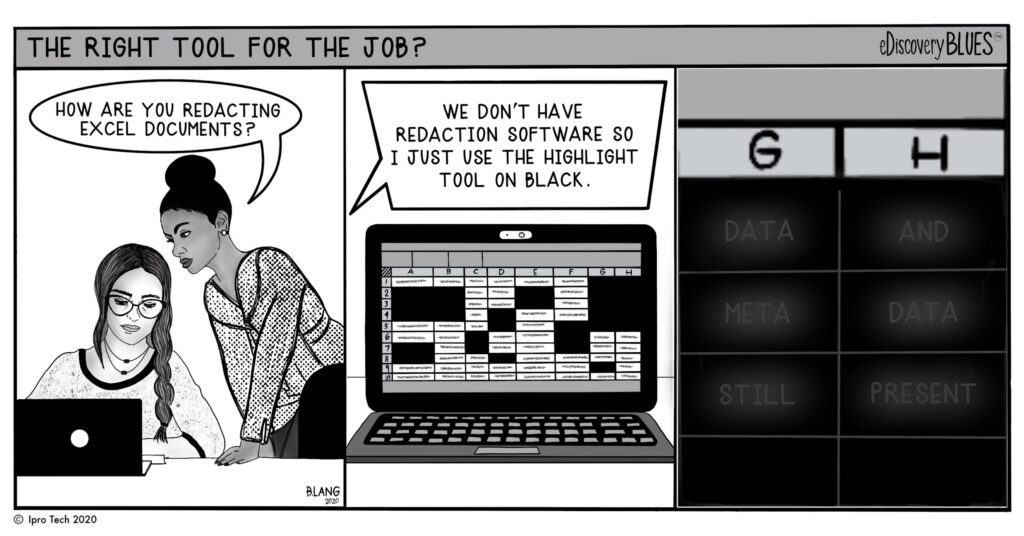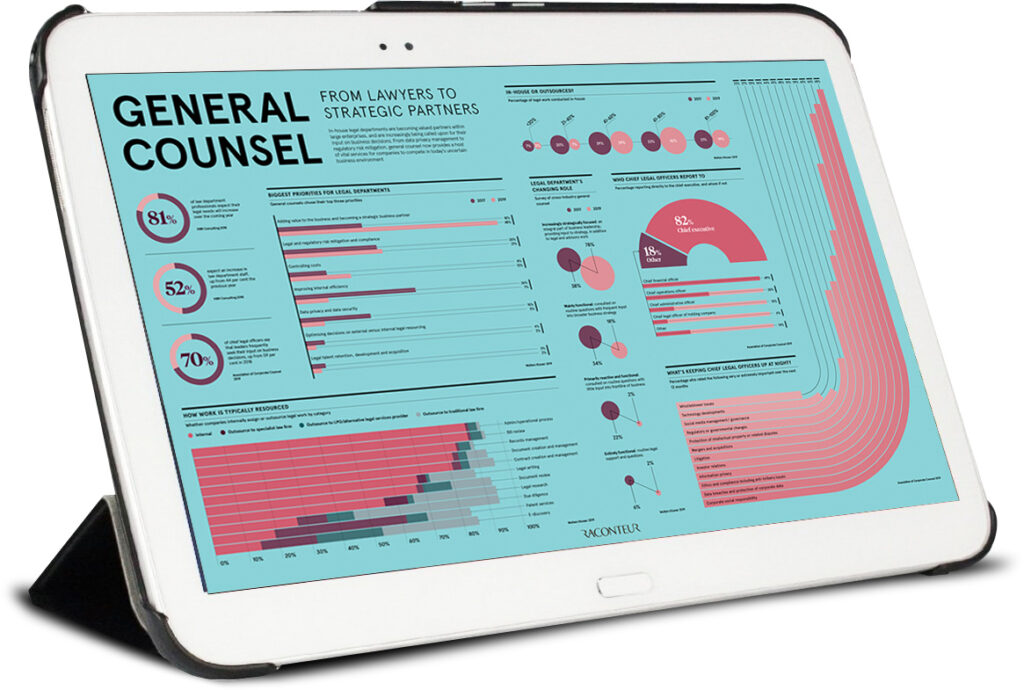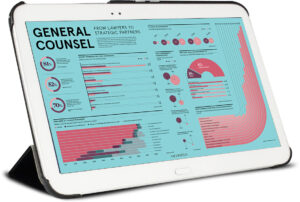More than Drawing a Black Box: How to Get Redactions Right for eDiscovery Production
For most people, redacted documents are the material of spy movies and political scandal. But here in the world of eDiscovery and FOIA requests, they’re a part of everyday life. But that doesn’t mean they’re to be taken lightly! Failure to redact documents or to make sure that redacted content is produced in its redacted format can be case ending (and job ending for the person responsible for the error).
The most common reason this happens, is because law firms and government agencies are taking the “redact by hand” route instead of using tools that properly manage productions to ensure documents meet the expected requirements, making sure the information meant to be kept private is hidden.
Even with redaction technology in place, some file types (like spreadsheet documents) can be difficult to redact, as we see in this week’s eDiscovery Blues™ comic. These challenging file types result in the litigation support or FOIA personnel using Microsoft Office and Adobe Acrobat to draw black boxes over the sensitive material, which is fine if the documents are going to be printed to hardcopy but doesn’t actually redact the digital information from the file.
In one 2019 grand jury filing, a member of the press was able to defeat these types of manually created redactions by simply copying the black-out boxes and pasting the text into a new document, which also brought over the text and metadata.
So how can you make sure redactions on digital documents are done correctly?
“That’s kind of the challenge: picking the right tool for the right job,” says Derek Miller, VP of Business Development at Ipro. “Anyone doing redactions and producing redacted documents needs to understand how these tools work and build measures into their processes to avoid this type of mistake. But mainly you want to make sure you have the right tools in your toolbox. Which means using software that’s specifically designed to redact and produce those redactions accurately.”
Here are a few things to look for in software to ensure accurately produced redactions:
- Automatically re-OCRs documents to remove the text under the redaction
- Runs validations to make sure the redactions are burned in and the text is correct
- Creates layered redactions so multiple production sets can be sent to multiple parties
Along with those functions, some eDiscovery software has added protections which identify documents which may need another layer of review before they’re produced. It’s similar to when your email platform asks if you want to send without a subject line or asks if you’ve forgotten an attachment.
One example of this is Ipro’s Production Shield™, which identifies these documents during the validation phase of the export process, giving administrators the opportunity to correct conflicts and ensure only appropriate documents are produced.
The main thing to remember when dealing with Electronically Stored Information (ESI) is that what you see on the screen is only the surface of the existing data. The same goes getting redactions right for eDiscovery: Just because all you see is a black box, doesn’t mean everything that lies beneath has disappeared.
Ipro’s Production Shield™ is available on Ipro’s Enterprise™ and Desktop™ eDiscovery Solutions.










 Written by Jim Gill, Content Writer,
Written by Jim Gill, Content Writer, 

